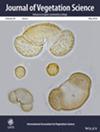Dry Soils Increase the Impact of Experimental Warming on Plant Community Composition in an Australian Subalpine Meadow
Abstract
Aims
How high-altitude plant communities will respond to climate change is unclear as studies often investigate warming effects in isolation. We asked how a species-rich subalpine meadow community responds to the combination of warmer, drier conditions using experimental manipulations. Specifically, we quantified responses to climate manipulation using Hill diversity, Bray–Curtis dissimilarity and abundance change at community, functional group and individual species levels.
Location
Subalpine meadow, Tasmania, Australia.
Methods
In an orthogonal design, we used open-top warming chambers and rainout shelters to simulate warm, drought and heatwave conditions. Responses of the plant community were assessed through estimates of species cover taken at peak biomass using an array of 400 contiguous 25 × 25 mm cells in fixed-position quadrats.
Results
After 3 years of climatic manipulations, warmed plots were less diverse than their respective controls, whereas neither drought nor heatwave treatments influenced community diversity or composition. Community composition in warmed plots diverged substantially from controls, driven by a reduction in grass, moss and small rosette forb abundance and an increase in sedge abundance with warming, though species responses within functional groups varied. Furthermore, compositional changes caused by warming were most pronounced in drier conditions, indicating this system may be vulnerable to simultaneous changes in temperature and precipitation.
Conclusions
Experimental warming caused a marked shift in community composition of this subalpine meadow, with the greatest response to warming occurring in dry sites. Our results indicate a crucial role of local soil water availability in mediating global climate change impacts on subalpine plant communities.


 求助内容:
求助内容: 应助结果提醒方式:
应助结果提醒方式:


